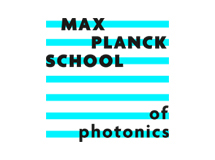
Nathalie Picqué - Frequency comb interferometry and spectroscopy
Virtual Lecture
Abstract:
A frequency comb is a broad spectrum of evenly spaced phase-coherent narrow laser lines. Initially invented for frequency metrology, such combs enable new approaches to interferometry. A scheme which has grown increasingly popular has been to exploit time-domain interference between frequency combs of different repetition frequency.
One of the most widespread applications has been dual-comb spectroscopy, which enables fast and accurate measurements over broad spectral bandwidths, of particular relevance to molecular sensing [1]. Accurate determination of all spectral line parameters [2] and broadband detection in light-starved conditions [3] become possible and, combined to nonlinear excitation of the samples [4], they open up new opportunities for precision spectroscopy and stringent comparisons with theories in atomic and molecular physics. Concurrently, progress towards chip-scale dual-comb spectrometers promises integrated devices for real-time sensing in analytical chemistry and biomedicine [5].
Recently, dual-comb digital holography, another application of frequency-comb interferometry, has been demonstrated [6]. The combination of broad spectral bandwidth and high temporal coherence opens up novel optical diagnostics, such as precise dimensional metrology over large distances without interferometric phase ambiguity, or hyperspectral 3-dimensional imaging with high spectral resolving power.
With selected examples, I will illustrate the rapidly advancing field of dual-comb interferometry.
[1] “Frequency comb spectroscopy”, Nature Photonics 13, 146–157 (2019)
[2] “Mid-infrared feed-forward dual-comb spectroscopy”, Proceedings of the National Academy of Sciences 116, 3454-3459 (2019)
[3] “Photon-level broadband spectroscopy and interferometry with two frequency combs, Proceedings of the National Academy of Sciences of the United States of America 117, 26688-26691 (2020).
[4] “Doppler-free Fourier transform spectroscopy”, Optics Letters 43, 162-165 (2018).
[5] “An on-chip III-V-semiconductor-on-silicon laser frequency comb for gas-phase molecular spectroscopy in real-time", preprint at arXiv:2006.15113 (2020)
[6] “Dual-comb hyperspectral digital holography”, preprint at arXiv:2105.00508 (2021).
Biography:
Nathalie Picqué is a senior research scientist at the Max-Planck Institute of Quantum Optics (MPQ), Garching near Munich, Germany. She obtained her doctoral degree in 1998 and her habilitation in 2006, both from the Université de Paris-Sud (Orsay, France). After a post-doctoral stay at the European Laboratory for Nonlinear Spectroscopy (Florence, Italy), she was appointed as a permanent research scientist with the Centre National de la Recherche Scientifique (CNRS) in 2000. In 2011, she relocated to Germany and has been leading a research group at the MPQ since.
Dr. Picqué’s research interests focus on molecular physics, precision spectroscopy and laser technology. She launched her research activities towards interferometry with optical frequency combs around 2004 simultaneously and independently to two or three other groups outside Europe. The field of dual-comb spectroscopy that she has been pioneering is now attracting the interest of many other researchers, for it enables accurate, fast and miniaturized spectroscopic tools for different applications, ranging from fundamental research in atomic/molecular physics to bio-molecular imaging and medical diagnostics. With her group, Dr. Picqué continues to advance the frontiers of laser frequency combs and precision spectroscopy. A 2019 OSA fellow, Nathalie Picqué has received several prizes and awards including the 2007 Bronze Medal of the CNRS, the 2010 Beller Lectureship Award (American Physical Society), the 2013 Coblentz award (Coblentz Society) and the 2021 Gentner-Kastler Prize in Physics (Germany Physical Society, French Physical Society).





